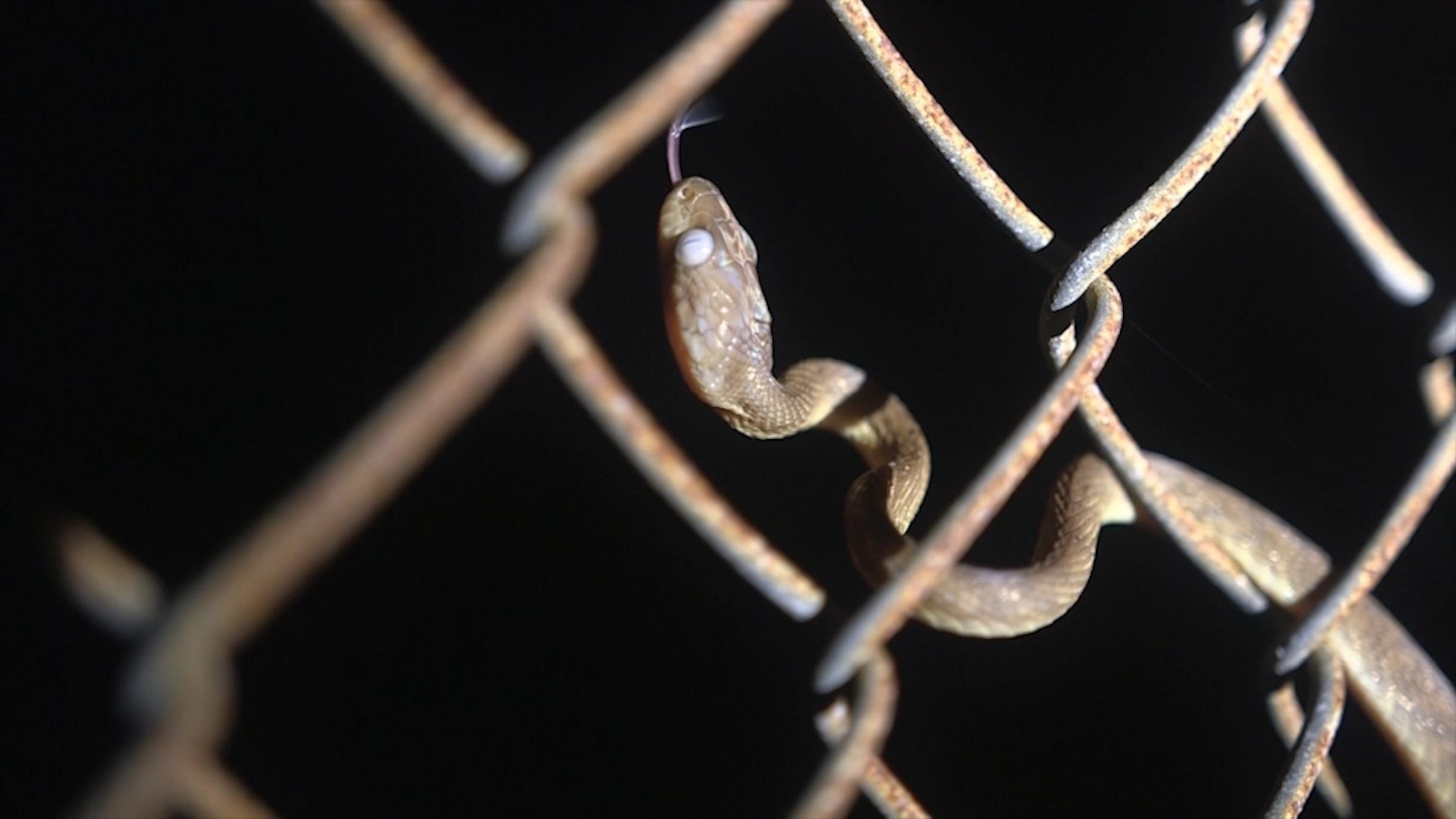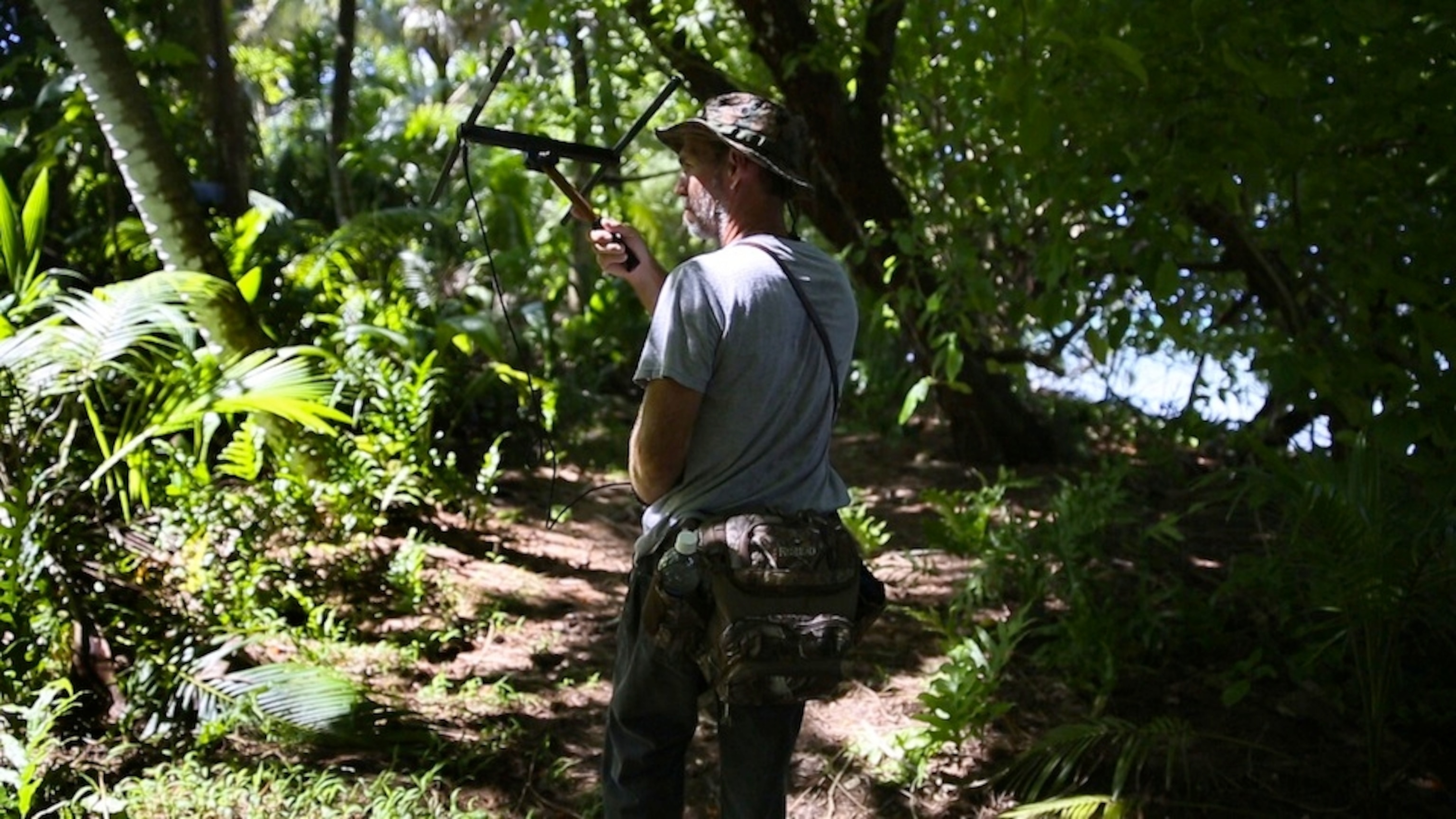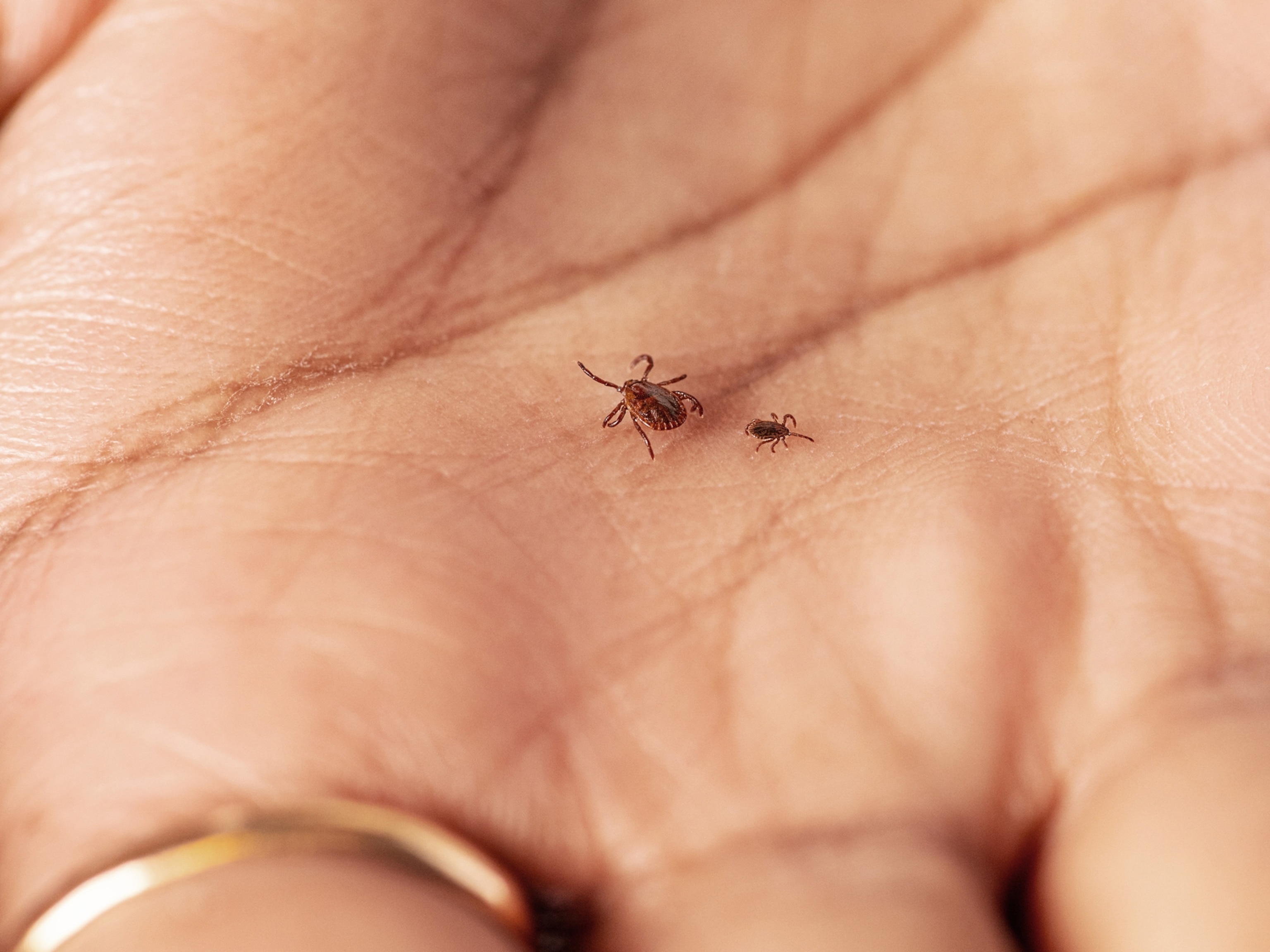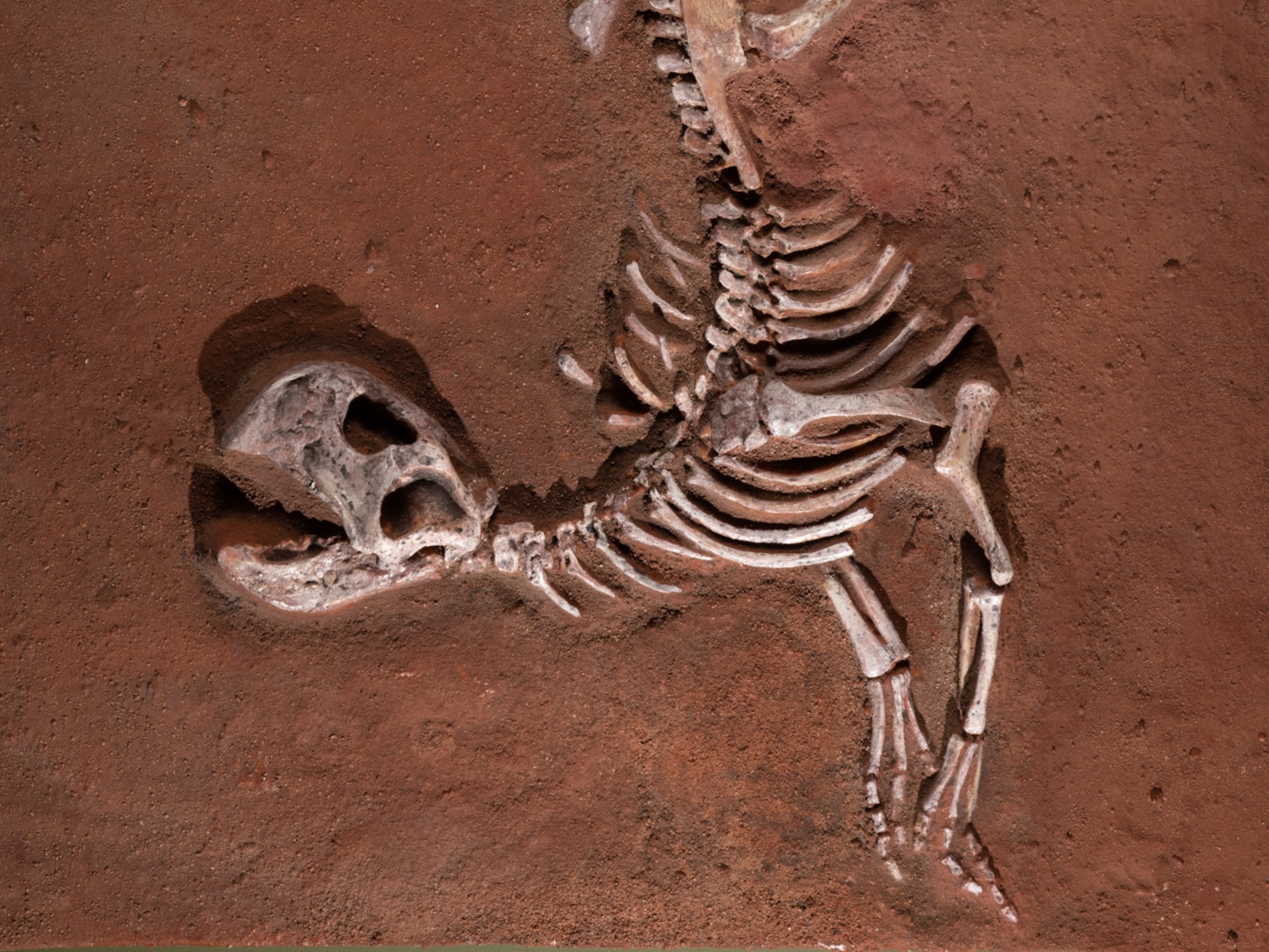It’s hard to find somewhere more remote than Guam, the U.S. territory east of the Philippines that’s part of the Mariana Islands. Its remoteness has been a benefit, especially to the U.S. military, which uses nearly one-third of the island for training and operations. Back in World War Two, the Enola Gay aircraft that dropped atomic bombs on Hiroshima and Nagasaki was serviced on Guam before it flew over Japan.
Since then, Guam have been as ravaged by non-native animals. Beetles that take down entire trees were brought to Guam around 2007. Toads, snails, and vines that demolish native plants have taken over much of the island.
But no invader has been more detrimental than the brown tree snake, a species from Indonesia that came to Guam in the 1940s. Within 30 years it has led to a collapse of nearly all of Guam’s wild birds. By the 80s, the island’s most iconic bird—the flightless Guam rail, which exists nowhere else in the world—was gone from the wild there. Only a few hundred of them still exist, mostly managed by Guam’s territorial government. In all, nine of 12 of the island’s birds no longer live in the wild on Guam. Meanwhile, a handful of brown tree snakes that invaded in the 40s have turned into an estimated one million.
To preserve the last vestiges of the Guam rail and a few other birds, Guam’s Department of Agriculture has tried to create a wild colony on a small nearby island called Cocos. At the same time, the U.S. Department of Agriculture has developed a strategy to play offense against the snake. From a helicopter, federal government biologists have begun to drop dead mice stuffed with acetaminophen (Tylenol, which is lethal to the snakes) from a helicopter.
USDA officials have dropped 10,000 baits and plan to release another 30,000 over the next few years. Yet considering the snakes’ million-plus population, and the fact that the snake has no natural predator other than humans and it reproduces quickly, some Guamanians wonder if the solution is little more than a band-aid on a very big wound.
With that reality, the objective is slowly changing. According to Diane Vice, brown tree snake control project leader for the island, the more urgent—and more of interest to the Pentagon, which has given $1 million dollars to Guam for the mice project—is to keep the snake off other islands, especially Hawaii. Hawaii still has the largest collection of endemic birds and plants. Hawaii’s economy, to which tourism is crucial, could be at risk if the state’s enviromental allure begins to collapse.
The plan is working, for now. Despite the dozens of flights every day on and off Guam—including at least one every day nonstop to Honolulu—the snake has been kept away from Hawaii. Some Guamanians say it’s only a matter of time before that changes. The Pacific is only so big, and as people come and go, only a few snakes hidden in cargo or someone’s suitcase could quickly multiply. The USDA responds that part of the Tylenol mice project is to understand how the snakes move and occupy an area. The subtext: They’re amassing knowledge that might one day be useful if Hawaii becomes inundated.
For all of the talk about snakes on Guam, it’s hardly an everyday issue. “I think people have this image of snakes everywhere, but it’s sometimes hard to find them,” says USDA biologist Craig Clark. Everyone on Guam has a story of how a snake invaded their house or bit their toddler, but usually, the annoyance is more about how the snake has become the unofficial mascot of an island with other qualities that rarely get talked about.
Normally, people on Guam spend their time like most other people: going to school or working. Every Wednesday, the Chamorro people indigenous to Guam host a market in the center of the island. Families sell the local specialty of red rice and spiced meat. Dancers move to rhythms you’ll only find in Micronesia. You can drink the juice of a coconut, hacked apart right in front of you. Yet it’s difficult to completely forget about the island’s slithery invader. At one small table, a man sells jewelry—earrings and necklaces made out of the vertebrae of brown tree snakes.
Clarification: this story has been amended to clarify that the USDA plans to drop several more rounds of mice, totaling an additional 30,000 baits.








